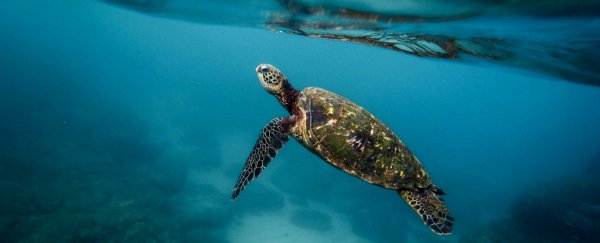The first comprehensive mapping of ocean wilderness revealed that no part of the ocean is untouched by humans, and only 13 percent could be classified as "wilderness."
"Nowhere is safe," said James Watson of the University of Queensland, an author on the study, in a video abstract for the report.
The exhaustive analysis of human impacts in all global marine ecosystems, published Thursday in Current Biology, categorized and mapped all the ways humans have changed the ocean, such as fishing, shipping and pollution.
The study scored each marine area according to the intensity, number and cumulative effect of the human impacts, building a map of the ocean and each geographic location's status.
To be classified as "wilderness," the study defined the area as "mostly free of human disturbance".
The cumulative stresses on the ocean can be compared in some ways to human health.
"If you've got a low-grade fever and a knife wound on your arm and a broken leg, and you start adding these things up, each one is pretty bad, but together you're in really bad shape. You need to hurry to the doctor. And that's the same idea as what we're talking about going on in the ocean," said Ben Halpern, an author of the study and a marine biology professor at the University of California at Santa Barbara.
"To me it is depressing. Often you have a picture in your head of these wild places where people don't really go, and actually that's not the case, we go really everywhere now. There is not much of the ocean that remains as it once was," said Kendall Jones, lead author and a conservation planning specialist at the Wildlife Conservation Society.
Coastal areas are the most disturbed by humans, and they're also the most productive, Halpern said.
For example, coral reefs and mangroves are near many cities, provide food and protection from wave damage and are crowded with underwater life.
Forty percent of the world's population lives near the ocean and depends heavily on its resources.
"We can only consider a few places today to be … 'wild,' including coral reefs in the tropical Pacific and both poles, but these are already among the most vulnerable places on Earth to climate change," said Terry Hughes, a coral reef expert and professor at James Cook University who was not involved in the study.
Countries with "substantial wilderness" included New Zealand, Australia and Chile. The study says this may be because of low human populations. The Northern Hemisphere had very few designated wilderness zones.
According to the study, most wilderness areas were in the often-romanticized "high seas."
"The Wild West frontier out there: They're so far away that people don't get to them very much. True remoteness helps keep some of these places in relative wilderness status," Halpern said.
With humans increasingly changing our planet, "nowhere in the sea is entirely free of human impacts," the authors said.
"We know wilderness areas are really important for biodiversity and the planet, but at the moment no international agreements are working to protect them," Jones said.
Biodiversity, or the variety of life on the planet, is important in its own right, said Jones, but it's also important for humanity.
"We depend on the ocean for an ever-growing proportion of our protein," and marine animals need large intact wilderness areas to recover and repopulate, he said.
With sea ice disappearing, more areas that count as wilderness could be lost, the authors said.
Areas that were previously unreachable are now reachable with new technologies. The study found less than 5 percent of global marine wilderness is inside protected areas.
About 7 percent of the total ocean is protected, regardless of wilderness status, and only a quarter of the world's coral reefs are protected.
The scientists ran their analysis twice: once with climate change stressors and once without them. If they included the four defined climate stresses, it eliminated every place on the planet as wilderness.
If climate change is included, the entire ocean is disturbed by people. They excluded the climate factors from some of their analysis to get the 13 percent remaining wilderness number, with areas being affected but at low levels.
"We really need to do something about climate change. Its fingerprint on the ocean is vast and pretty much everywhere, and that's already creating all sorts of changes in the ocean that are having an impact, not just on nature, but on people too," Halpern said.
The authors called for better enforcement of existing fishing laws, minimizing ocean-based mining and runoff from land activities.
"There still is time to make a difference. I still have hope for the oceans. It's not too late. Thirteen percent might not seem like that much, but that's a lot of area that's still relatively intact," said Halpern.
"It just comes down to the will of the people and the politicians to care enough about the ocean to make these changes."
2018 © The Washington Post
This article was originally published by The Washington Post.
